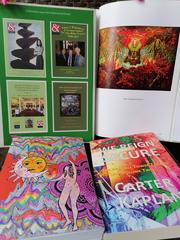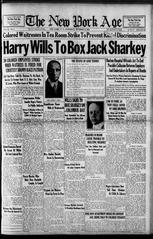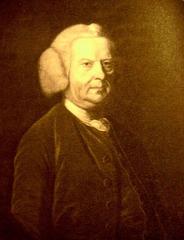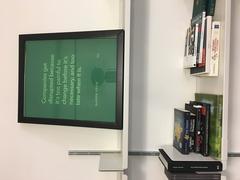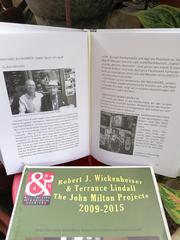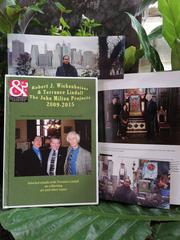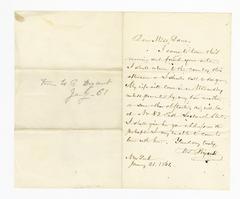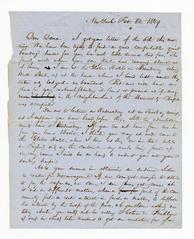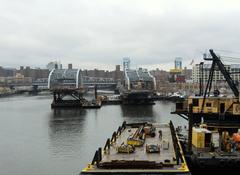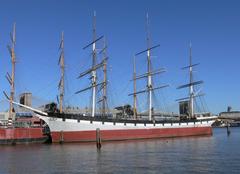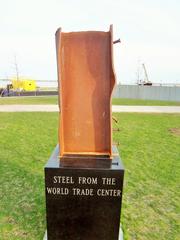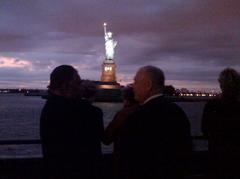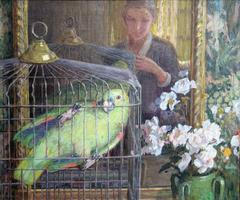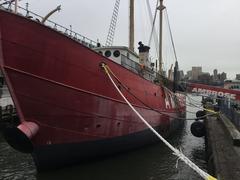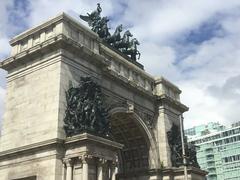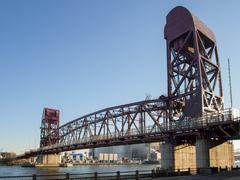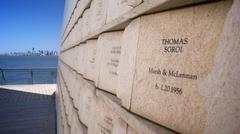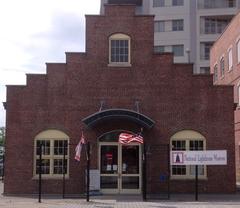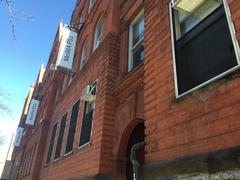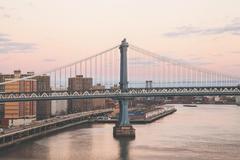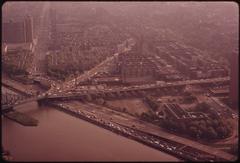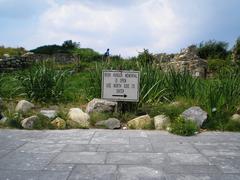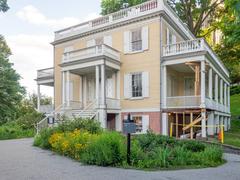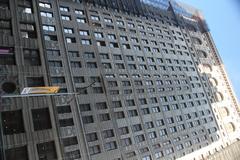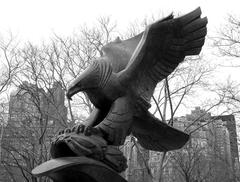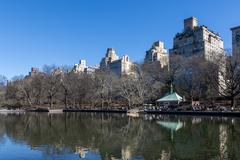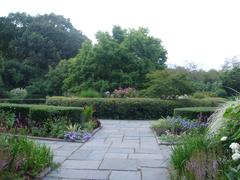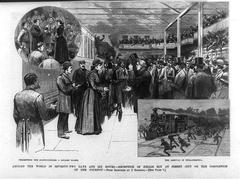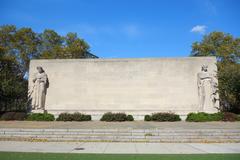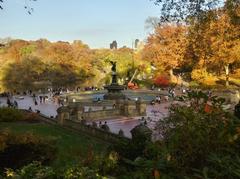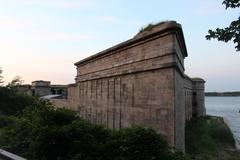
Discover the Magic of New York City
Date: 14/08/2024
Welcome to the City That Never Sleeps
Welcome to New York City, where the pulse of the world beats incessantly and dreams come alive in the cacophony of honking taxis, bustling streets, and dazzling lights. Often dubbed ‘The City That Never Sleeps,’ New York is a metropolis that ceaselessly buzzes with energy and opportunity. From its prehistoric roots to its current status as a global powerhouse, the city’s history is a rich tapestry woven with tales of resilience, innovation, and diversity. Imagine walking through the same streets where the Lenape people once thrived, where European explorers first set foot, and where immigrants from every corner of the globe found a new home. This is a city that has seen it all and continues to reinvent itself (History101, Introducing New York).
New York City is a symphony of cultures, a melting pot of traditions, and a canvas painted with the vibrant hues of its diverse population. It’s where you can savor a slice of authentic New York pizza in Little Italy, catch a world-class Broadway show, and stand in awe of iconic landmarks like the Statue of Liberty and the Empire State Building—all in a single day. The city’s significance extends beyond its historical and cultural heritage; it’s an economic titan, a media hub, and a beacon of architectural brilliance (History.com, Wikipedia).
This guide is your ticket to exploring New York City like a savvy local. We’ll delve into its storied past, uncover its hidden gems, and reveal the secrets that make this city an unforgettable adventure. Whether you’re a history buff, a culture enthusiast, or a first-time visitor, this comprehensive guide will help you navigate New York City’s myriad attractions, from the towering skyscrapers of Manhattan to the serene green spaces of Central Park. Ready to embark on this journey? Let’s dive into the heart of the Big Apple and explore its wonders, one borough at a time.
Your NYC Adventure Awaits
- History of New York City
- Pre-Colonial and Early Colonial Period
- Dutch and English Colonial Era
- Revolutionary War and Early United States Period
- 19th Century: Industrialization and Immigration
- 20th Century: Cultural and Economic Ascendancy
- Late 20th and Early 21st Century: Challenges and Resilience
- Significance of New York City
- Historical Significance
- Early European Exploration and Settlement
- Revolutionary War and Early United States
- Immigration and Growth
- Cultural Significance
- Melting Pot of Cultures
- Arts and Entertainment
- Museums and Landmarks
- Economic Significance
- Financial Hub
- Tourism Industry
- Architectural Significance
- Iconic Skyscrapers
- Historic Districts
- Social and Political Significance
- Center of Social Movements
- Media and Communication
- Visitor Tips
- Best Times to Visit
- Getting Around
- Must-See Attractions
- Dining and Shopping
- Top Attractions in New York City
- Empire State Building
- Statue of Liberty and Ellis Island
- Central Park
- Times Square
- The Metropolitan Museum of Art
- One World Observatory
- Broadway and the Theater District
- The High Line
- The Museum of Modern Art (MoMA)
- Brooklyn Bridge
- Rockefeller Center
- The 9/11 Memorial & Museum
- The Edge at Hudson Yards
- The Vessel
- The American Museum of Natural History
- The Intrepid Sea, Air & Space Museum
- The New York Public Library
- The Guggenheim Museum
- The Bronx Zoo
- The New York Botanical Garden
- Coney Island
- The Frick Collection
- The Whitney Museum of American Art
- The New York City Subway
- The Brooklyn Museum
- The New York Hall of Science
- The Cloisters
- The New York Aquarium
- The New York Transit Museum
- The Tenement Museum
- The Rubin Museum of Art
- The Museum of the Moving Image
- The New York Historical Society
- The Museum of Arts and Design (MAD)
- The New York City Fire Museum
- The Museum of Chinese in America (MOCA)
- The Skyscraper Museum
- The Museum of the City of New York
- The New York Hall of Fame for Great Americans
History of New York City
Pre-Colonial and Early Colonial Period
Imagine a time when dinosaurs roamed the land that would eventually become New York City. Yes, you heard that right! The city’s history begins as far back as the late Paleozoic Era. Fast forward a few million years, and by around 10,000 years ago, the Lenape people were the region’s original New Yorkers, thriving in the lush wilderness (History101).
In 1524, European explorer Giovanni da Verrazzano sailed into New York Bay and dubbed it New Angoulême. The area was home to the Algonquins and Iroquois Native Americans (Introducing New York). The Dutch soon followed, with Henry Hudson exploring the bay in 1609 and establishing Fort Nassau in 1614. By 1624, New Amsterdam was born, laying the groundwork for the bustling metropolis we know today (History101).
Dutch and English Colonial Era
Ah, the famous tale of Peter Minuit purchasing Manhattan for goods worth $24 in 1626. This legendary deal with the Native Americans set the stage for New Amsterdam, a thriving Dutch colony rich in fur trade (Introducing New York). But in 1674, the English swooped in, renaming it New York in honor of the Duke of York. By 1754, Columbia University was established, affirming the city’s growing significance in education and culture (Introducing New York).
Revolutionary War and Early United States Period
New York played a starring role in the American Revolution. Picture dramatic battles like the Battle of Long Island and British forces occupying the city. Post-war, New York became a crucial hub for the new nation. In 1789, it even served as the first capital of the United States, where George Washington took the presidential oath on Wall Street (History101).
19th Century: Industrialization and Immigration
The 19th century? A whirlwind of transformation! The Erie Canal’s completion in 1825 was a game-changer, linking the Atlantic to the Great Lakes and boosting trade. Waves of immigrants from Ireland, Italy, and beyond added vibrant cultural tapestries to the city (Wikipedia). Iconic landmarks like the Brooklyn Bridge and the Statue of Liberty became symbols of opportunity and freedom.
20th Century: Cultural and Economic Ascendancy
The 20th century saw New York City crowned as a global powerhouse. From the Harlem Renaissance to the rise of Broadway, the city was a cultural juggernaut (Wikipedia). Skyscrapers like the Empire State Building and the Chrysler Building punctuated its skyline, while the Great Depression and World War II tested its resilience. Post-war, the city surged ahead, becoming a hub for finance, media, and technology, and housing the United Nations headquarters.
Late 20th and Early 21st Century: Challenges and Resilience
The latter part of the 20th century was a rollercoaster for New York City. The 1970s and 1980s brought economic woes and rising crime, but the city bounced back in the 90s with renewed vigor. The September 11, 2001 terrorist attacks were a dark chapter, but New York’s resilience shone through. The 21st century sees the city constantly evolving, with new landmarks like One World Trade Center and the High Line park symbolizing its enduring spirit.
Significance of New York City
Did you know that New York City is often called ‘The City That Never Sleeps’ because its streets are always buzzing with energy, no matter the hour? Let’s dive into the historical, cultural, economic, architectural, social, and political significance of this fascinating metropolis!
Historical Significance
Early European Exploration and Settlement
New York City’s history began with the first European explorer, Giovanni da Verrazzano, in 1524. The Dutch established the first European settlement in 1608, and New Amsterdam was founded in 1624. The British seized New Amsterdam in 1664 and renamed it New York City (History of New York City).
Revolutionary War and Early United States
New York City played a pivotal role during the American Revolution. It was a major seaport and strategic location, making it a prime target for British forces. The city was occupied by the British from 1776 until 1783. After the war, New York City became the first capital of the United States, and George Washington was inaugurated as the first president at Federal Hall on Wall Street in 1789 (History.com).
Immigration and Growth
Between 1892 and 1954, millions of immigrants arrived in New York Harbor and passed through Ellis Island. It is estimated that up to 40 percent of Americans can trace at least one ancestor to this port of entry (History.com). This influx of immigrants contributed to the city’s diverse cultural fabric and rapid growth.
Cultural Significance
Melting Pot of Cultures
New York City is renowned for its cultural diversity. The city has been a melting pot of cultures since its early days, with significant populations from the Netherlands, England, France, Germany, and later, virtually every country in the world. This diversity is reflected in the city’s neighborhoods, cuisine, festivals, and arts (History.com).
Arts and Entertainment
Forget the tourist traps – let’s take you on a whirlwind tour of NYC’s best-kept secrets and quirks that even the locals love! Broadway, located in the Theater District, is synonymous with world-class theater productions. The city is also home to iconic music venues like the Apollo Theater in Harlem, which has hosted legendary performances by artists such as Ella Fitzgerald and James Brown (Time Out).
Museums and Landmarks
The city boasts some of the world’s most famous museums and landmarks. The Metropolitan Museum of Art, the Museum of Modern Art (MoMA), and the American Museum of Natural History are just a few examples. Landmarks like the Statue of Liberty, Empire State Building, and Central Park are must-visit sites for any tourist (More Than Just Parks).
Economic Significance
Financial Hub
New York City is one of the world’s leading financial centers. Wall Street, located in the Financial District, is home to the New York Stock Exchange and NASDAQ. The city’s financial sector plays a crucial role in the global economy, influencing markets and financial policies worldwide (History.com).
Tourism Industry
Tourism is a significant contributor to New York City’s economy. In 2019, the city welcomed 67 million visitors, generating substantial revenue. Despite the impact of the COVID-19 pandemic, the tourism industry has shown strong signs of recovery, with 62 million visitors in 2023 (McKinsey).
Architectural Significance
Iconic Skyscrapers
Think of New York City as a giant, bustling beehive, each neighborhood its own unique honeycomb brimming with sweet surprises. New York City’s skyline is one of the most recognizable in the world, featuring iconic skyscrapers such as the Empire State Building, Chrysler Building, and One World Trade Center. These buildings are not only architectural marvels but also symbols of the city’s resilience and innovation (The Discoveries Of).
Historic Districts
The city is home to numerous historic districts that preserve its architectural heritage. Areas like the DUMBO Historic District in Brooklyn and the Greenwich Village Historic District in Manhattan offer a glimpse into the city’s past while showcasing its architectural diversity (Loving New York).
Social and Political Significance
Center of Social Movements
New York City has been at the forefront of various social and political movements. The city played a significant role in the civil rights movement, the LGBTQ+ rights movement, and more recently, the Black Lives Matter movement. Landmarks like Stonewall Inn in Greenwich Village are symbols of these struggles and triumphs (National Geographic).
Media and Communication
The city is a major center for media and communication. It is home to major news organizations like The New York Times, NBC, and ABC. The city’s media landscape influences public opinion and shapes national and international discourse (McKinsey).
Visitor Tips
Best Times to Visit
New York City is a year-round destination, but the best times to visit are spring (April to June) and fall (September to November) when the weather is pleasant, and the city is vibrant with activities. Summer can be hot and humid, while winter can be cold with occasional snowstorms (Loving New York).
Getting Around
The city’s extensive public transportation system, including subways, buses, and ferries, makes it easy to get around. Taxis and ride-sharing services are also widely available. Walking is another great way to explore the city’s neighborhoods and landmarks (McKinsey).
Must-See Attractions
Forget the Empire State Building and head to the Top of the Rock for fewer crowds and equally stunning views. Some must-see attractions include the Statue of Liberty, Times Square, Central Park, and the Empire State Building. For art lovers, the Metropolitan Museum of Art and MoMA are essential stops. Broadway shows are a must for theater enthusiasts (The Discoveries Of).
Dining and Shopping
New York City offers a diverse culinary scene, from street food to Michelin-starred restaurants. Neighborhoods like Chinatown, Little Italy, and Harlem offer unique dining experiences. For shopping, areas like Fifth Avenue, SoHo, and Brooklyn Flea are popular destinations (McKinsey).
New York City’s significance is multifaceted, encompassing its rich history, cultural diversity, economic power, architectural marvels, and social impact. Whether you’re a history buff, art lover, foodie, or simply looking to experience the city’s vibrant energy, New York City offers something for everyone.
Ready to uncover NYC’s hidden gems? Download Audiala today and let the adventure begin!
Top Attractions in New York City
Welcome to the vibrant, ever-buzzing heart of the Big Apple! New York City, where dreams are made, and skyscrapers touch the sky. Whether you’re a first-time visitor or a seasoned New Yorker, this guide will take you on a whirlwind tour of the city’s most iconic attractions and hidden gems. Ready to dive in? Let’s go! 🗽
Empire State Building
Standing tall at 1,454 feet, the Empire State Building is not just a building; it’s a New York City legend. Completed in 1931, it was the tallest building in the world until 1970. The Art Deco design is a feast for the eyes, and the observation decks on the 86th and 102nd floors offer views that will take your breath away. Pro tip: Visit at sunset for a magical experience! Check out more at the Empire State Building’s official website.
Statue of Liberty and Ellis Island
Lady Liberty, a gift from France in 1886, stands as a symbol of freedom and democracy. Hop on a ferry to Liberty Island and explore the pedestal, museum, and even climb to the crown for unbeatable views. Nearby, Ellis Island was the gateway for over 12 million immigrants. The museum here tells their stories in a way that will touch your heart. Get your tickets at the Statue of Liberty and Ellis Island website.
Central Park
An 843-acre oasis in the middle of the urban jungle, Central Park is a slice of paradise. Designed by Frederick Law Olmsted and Calvert Vaux, it features gems like Bethesda Terrace, Bow Bridge, and the Central Park Zoo. Whether you’re rowing a boat on the lake, picnicking in Sheep Meadow, or exploring the Ramble’s wooded trails, there’s something for everyone. Don’t miss SummerStage concerts and Shakespeare in the Park! More info on the Central Park Conservancy website.
Times Square
Known as “The Crossroads of the World,” Times Square is where the city’s pulse beats the loudest. Bright lights, Broadway theaters, and bustling crowds make this a place like no other. Don’t miss the TKTS booth for discounted theater tickets, the New Year’s Eve ball drop, and iconic stores and restaurants. For the full scoop, visit the Times Square Alliance website.
The Metropolitan Museum of Art
The Met is a treasure trove of art and history, housing over 2 million works spanning 5,000 years. Highlights include the Egyptian Temple of Dendur, European Paintings, and the Costume Institute. With three locations—The Met Fifth Avenue, The Met Breuer, and The Met Cloisters—each visit offers a uniqueexperience. Find out more at the Metropolitan Museum of Art website.
One World Observatory
Perched atop One World Trade Center, One World Observatory offers stunning views from the tallest building in the Western Hemisphere. The observatory spans floors 100 to 102 and features interactive exhibits like the “Sky Portal” and “City Pulse.” Start your journey with a high-speed elevator ride showcasing the evolution of NYC’s skyline. Get tickets at the One World Observatory website.
Broadway and the Theater District
Broadway is the epitome of world-class theater. With 41 professional theaters, the Theater District around Times Square offers a smorgasbord of productions, from classics like “The Phantom of the Opera” to modern hits like “Hamilton.” Get your tickets at the TKTS booth or online. For show listings, visit the Broadway website.
The High Line
The High Line is an elevated park built on a former railway track, stretching 1.45 miles along Manhattan’s West Side. It features gardens, art installations, and scenic viewpoints. The design incorporates elements of the original railway, creating a unique urban green space. Key attractions include Chelsea Market Passage, 10th Avenue Square, and the Diller-von Furstenberg Sundeck. More info at the High Line website.
The Museum of Modern Art (MoMA)
MoMA is a haven for contemporary and modern art lovers. Its collection includes masterpieces by Picasso, Van Gogh, and Warhol. The recent expansion added new galleries and public spaces, enhancing the visitor experience. Special exhibitions, film screenings, and educational programs make every visit unique. Discover more at the MoMA website.
Brooklyn Bridge
An engineering marvel completed in 1883, the Brooklyn Bridge connects Manhattan and Brooklyn over the East River. Walk or bike across to enjoy stunning views of the skyline and the Statue of Liberty. The pedestrian walkway is perfect for photos and learning about the bridge’s history. More info at the NYC Department of Transportation website.
Rockefeller Center
Rockefeller Center, a complex of 19 commercial buildings, is a cultural and entertainment hub. Key attractions include the Top of the Rock Observation Deck, Radio City Music Hall, and the iconic ice-skating rink. Don’t miss the annual Christmas tree lighting ceremony! For tours and more, visit the Rockefeller Center website.
The 9/11 Memorial & Museum
Honoring the victims of the September 11, 2001, attacks, the 9/11 Memorial features two reflecting pools set in the footprints of the Twin Towers. The Museum offers exhibits detailing the events of 9/11, the aftermath, and personal stories. Learn more at the 9/11 Memorial & Museum website.
The Edge at Hudson Yards
The Edge at Hudson Yards is the highest outdoor sky deck in the Western Hemisphere, offering 360-degree views from 1,100 feet up. The glass floor and angled glass walls make for a thrilling experience. Don’t miss the champagne bar! For tickets, visit the Edge website.
The Vessel
The Vessel, a honeycomb-like structure at Hudson Yards, offers a unique climbing experience with its 154 interconnected flights of stairs. It’s a fun and interactive way to enjoy city views. More info at the Hudson Yards website.
The American Museum of Natural History
Located on the Upper West Side, this museum is famous for its scientific collections and exhibits. Highlights include the Hall of Saurischian Dinosaurs, the Rose Center for Earth and Space, and the Butterfly Conservatory. For more, visit the American Museum of Natural History website.
The Intrepid Sea, Air & Space Museum
Housed on the USS Intrepid, this museum offers exhibits on military and maritime history. Key attractions include the Space Shuttle Enterprise, the Concorde, and a collection of aircraft. More info at the Intrepid Museum website.
The New York Public Library
Located on Fifth Avenue, the Stephen A. Schwarzman Building is an architectural gem. Highlights include the Rose Main Reading Room and special collections. Free tours and public programs are available. Learn more at the New York Public Library website.
The Guggenheim Museum
Designed by Frank Lloyd Wright, the Solomon R. Guggenheim Museum is renowned for its unique architecture and modern art collection. The spiral ramp showcases works by Kandinsky, Picasso, and Pollock. More info at the Guggenheim Museum website.
The Bronx Zoo
One of the largest metropolitan zoos in the world, the Bronx Zoo spans 265 acres and houses over 6,000 animals. Key exhibits include the Congo Gorilla Forest and Tiger Mountain. More info at the Bronx Zoo website.
The New York Botanical Garden
This 250-acre living museum in the Bronx features diverse plant collections and landscapes. Highlights include the Enid A. Haupt Conservatory and the Rose Garden. More info at the New York Botanical Garden website.
Coney Island
A historic seaside resort in Brooklyn, Coney Island offers amusement parks, a beach, and a boardwalk. Key attractions include Luna Park and the Cyclone roller coaster. More info at the Coney Island website.
The Frick Collection
Housed in a Gilded Age mansion on the Upper East Side, the Frick Collection features European paintings, sculptures, and decorative arts. Highlights include works by Vermeer and Rembrandt. More info at the Frick Collection website.
The Whitney Museum of American Art
Located in the Meatpacking District, the Whitney focuses on 20th- and 21st-century American art. The collection includes works by Edward Hopper and Georgia O’Keeffe. More info at the Whitney Museum website.
The New York City Subway
More than just a transit system, the NYC Subway features stunning architecture and public art in key stations like Grand Central Terminal and the Oculus at the World Trade Center. It’s an efficient way to explore the city. More info at the MTA website.
The Brooklyn Museum
Located in Prospect Heights, the Brooklyn Museum is one of the oldest and largest art museums in the U.S. Its collection spans ancient Egyptian artifacts to contemporary art. More info at the Brooklyn Museum website.
The New York Hall of Science
This Queens museum offers interactive exhibits on science and technology. Key attractions include the Science Playground and Rocket Park Mini Golf. More info at the New York Hall of Science website.
The Cloisters
A branch of the Met, the Cloisters is dedicated to medieval European art and architecture. Located in Fort Tryon Park, it features reconstructed cloisters and gardens. More info at the Met Cloisters website.
The New York Aquarium
Located on Coney Island, the aquarium offers exhibits on marine life and conservation. Key attractions include the Ocean Wonders: Sharks! exhibit. More info at the New York Aquarium website.
The New York Transit Museum
Located in a decommissioned subway station in Brooklyn, this museum offers exhibits on the history of public transportation in NYC. Highlights include vintage subway cars. More info at the New York Transit Museum website.
The Tenement Museum
Located on the Lower East Side, this museum offers guided tours of restored tenement buildings that housed immigrants in the 19th and 20th centuries. More info at the Tenement Museum website.
The Rubin Museum of Art
Located in Chelsea, the Rubin Museum focuses on the art and cultures of the Himalayas, India, and neighboring regions. More info at the Rubin Museum website.
The Museum of the Moving Image
Located in Astoria, Queens, this museum offers exhibits on the history and art of film, television, and digital media. More info at the Museum of the Moving Image website.
The New York Historical Society
Located on the Upper West Side, this is NYC’s oldest museum. The collection includes artifacts related to the history of New York and the U.S. More info at the New York Historical Society website.
The Museum of Arts and Design (MAD)
Located at Columbus Circle, MAD focuses on contemporary and historic innovation in craft, art, and design. More info at the Museum of Arts and Design website.
The New York City Fire Museum
Located in a historic firehouse in SoHo, this museum offers exhibits on the history of firefighting in NYC. More info at the New York City Fire Museum website.
The Museum of Chinese in America (MOCA)
Located in Chinatown, MOCA offers exhibits on the history and culture of Chinese Americans. More info at the Museum of Chinese in America website.
The Skyscraper Museum
Located in Battery Park City, this museum offers exhibits on the history and design of skyscrapers. More info at the Skyscraper Museum website.
The Museum of the City of New York
Located on Fifth Avenue, this museum offers exhibits on the history and culture of NYC. More info at the Museum of the City of New York website.
The New York Hall of Fame for Great Americans
Located on the campus of Bronx Community College, this outdoor sculpture gallery honors prominent Americans. More info at the Bronx Community College website.
Unveil New York’s Secrets with Audiala
New York City is more than just a destination; it’s an experience, a feeling, and a story waiting to be told. From its prehistoric beginnings to its rise as a global metropolis, New York City’s history is a testament to its remarkable ability to adapt and thrive (History101, Introducing New York). Its significance spans across historical, cultural, economic, architectural, social, and political realms, making it a city that captivates and inspires millions each year (History.com, McKinsey).
Whether you’re marveling at the iconic skyline from the Empire State Building, exploring the artistic treasures of the Metropolitan Museum of Art, or wandering through the historic neighborhoods of Brooklyn, New York City offers something for everyone. Its cultural diversity is unparalleled, its landmarks are world-renowned, and its energy is simply electric. This city has been a beacon of hope and opportunity for centuries, and it continues to evolve and innovate, reflecting the dreams and aspirations of its inhabitants and visitors alike (The Discoveries Of, More Than Just Parks).
As you plan your visit or reminisce about your time in New York City, remember that there’s always more to discover. Download Audiala, our tour guide app, for beautifully crafted audio guides that unlock the city’s secrets and stories. With expert insights and hidden gems, Audiala will be your perfect companion, making your New York City adventure truly unforgettable. So go ahead, dive into the magic of the Big Apple, and let the city’s endless wonders unfold before you.
